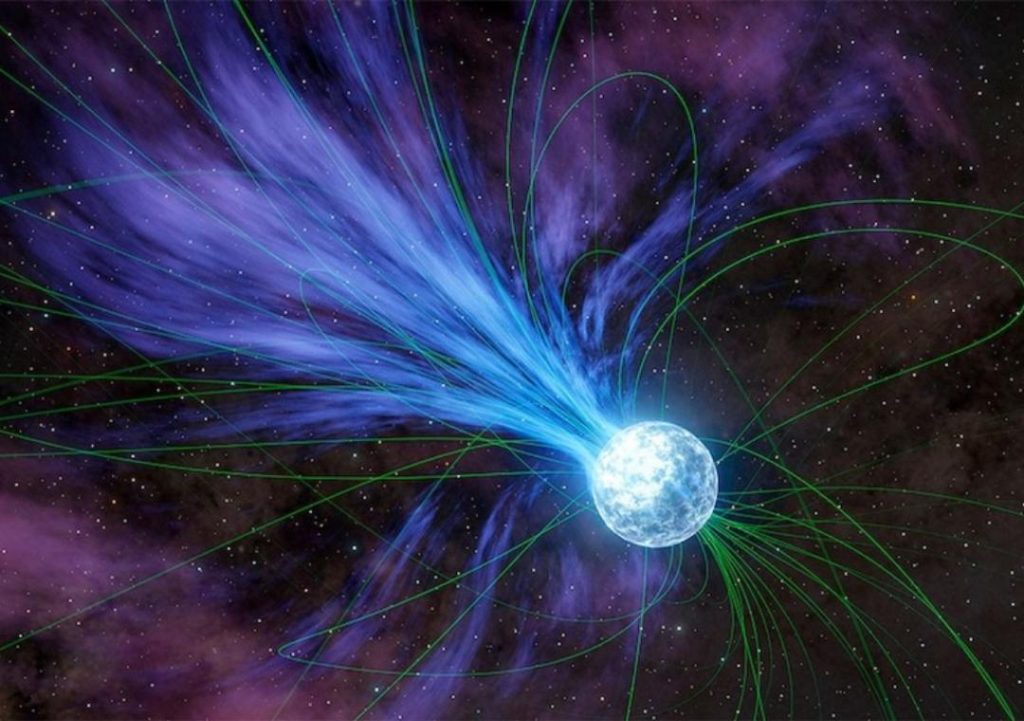
Gold & Platinum Created through Neutron Stars’ Explosions: Study
For centuries, humans have been fascinated by the origins of precious metals like gold and platinum. While we have long known that these metals are abundant on Earth, the exact process by which they were formed has remained a mystery. Recently, a groundbreaking study has shed new light on this phenomenon, revealing that magnetars, or highly magnetized neutron stars, played a crucial role in the creation of these elements.
According to a study led by Columbia University student Anirudh Patel, magnetars exploded and released flares that contained gold and platinum in a cosmic event that occurred over 20 years ago. This finding has significant implications for our understanding of the origins of these precious metals and the processes that shape the universe.
Magnetars are a type of neutron star that is characterized by its extremely strong magnetic field. These stars are born when a massive star collapses under its own gravity, resulting in a massive release of energy. In the case of magnetars, this energy is released in the form of powerful magnetic fields, which can be so strong that they can affect the surrounding space.
The study, which was published in the journal Nature, used data from NASA’s Fermi Gamma-Ray Space Telescope to analyze the explosion of a magnetar that occurred in 1998. By analyzing the radiation emitted by the explosion, the researchers were able to detect the presence of gold and platinum in the flare.
“This is the first time we’ve been able to detect the presence of these elements in a magnetar explosion,” said Dr. Patel, the lead author of the study. “It’s a major breakthrough in our understanding of the origins of precious metals.”
But how exactly did gold and platinum come to be formed in the explosion? According to the researchers, the answer lies in the extreme temperatures and pressures that are generated during a magnetar explosion.
“When a magnetar explodes, it releases an enormous amount of energy in the form of radiation and particles,” explained Dr. Patel. “This energy is so intense that it can create the conditions necessary for the formation of heavy elements like gold and platinum.”
In this context, gold and platinum are formed through a process known as rapid neutron capture, or r-process nucleosynthesis. This process occurs when a large number of neutrons interact with atomic nuclei, causing them to merge and form heavier elements.
The researchers used computer simulations to model the explosion and the formation of gold and platinum. They found that the explosion was so intense that it created a region of space where the density and temperature were so high that they triggered the r-process nucleosynthesis.
The study’s findings have significant implications for our understanding of the origins of precious metals. It suggests that magnetars may play a crucial role in the creation of these elements, and that they may be responsible for the formation of other heavy elements in the universe.
The researchers believe that magnetars are responsible for creating gold and platinum in other parts of the universe as well. They estimate that explosions of this type occur approximately once per decade in the Milky Way and annually across the observable universe.
“This study has far-reaching implications for our understanding of the universe,” said Dr. Patel. “It shows that magnetars are not just intense sources of radiation, but also play a crucial role in the creation of heavy elements like gold and platinum.”
In conclusion, the study provides a groundbreaking insight into the origins of precious metals like gold and platinum. The findings suggest that magnetars, or highly magnetized neutron stars, played a crucial role in the creation of these elements through neutron star explosions. This study has significant implications for our understanding of the universe and the processes that shape it.






